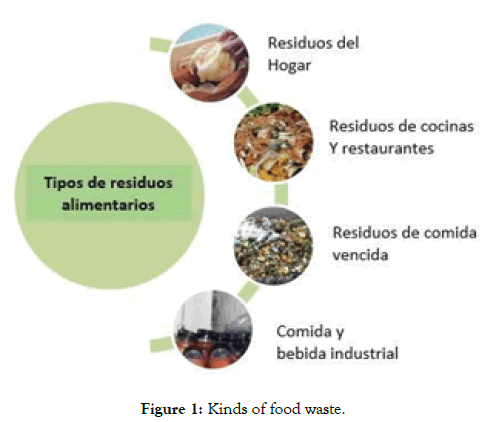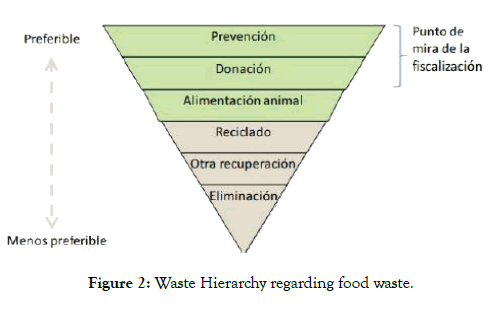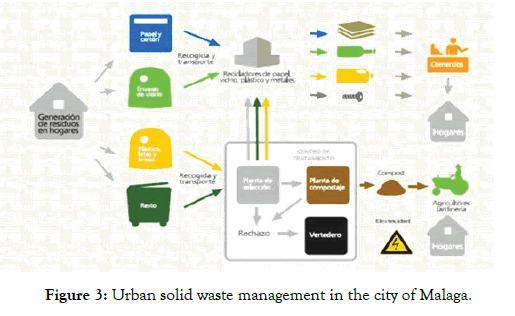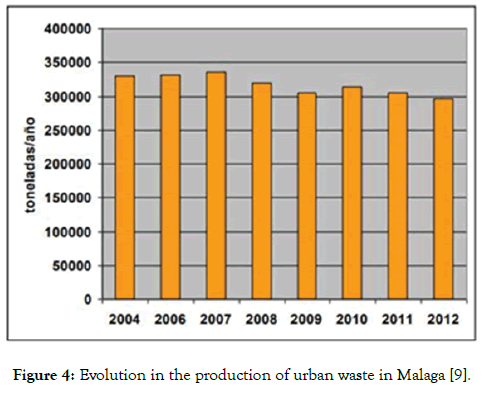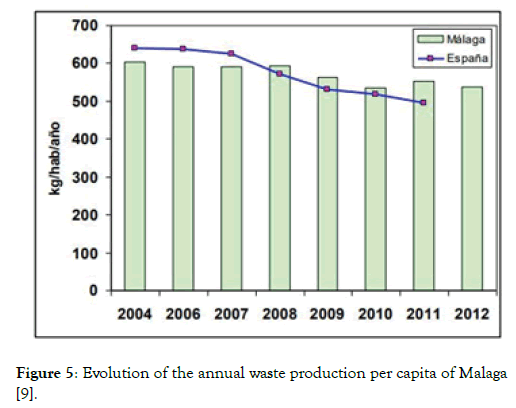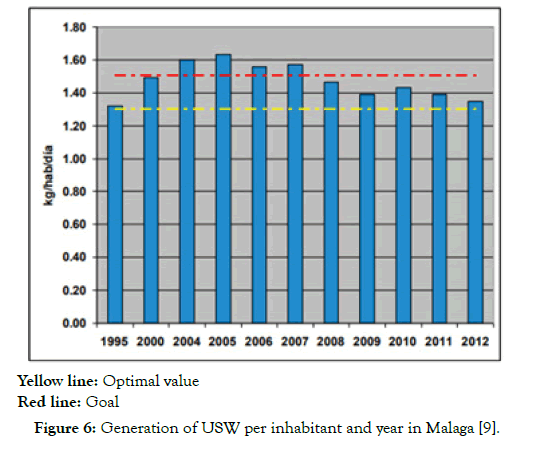Indexed In
- Open J Gate
- The Global Impact Factor (GIF)
- Open Archive Initiative
- VieSearch
- International Society of Universal Research in Sciences
- China National Knowledge Infrastructure (CNKI)
- CiteFactor
- Scimago
- Ulrich's Periodicals Directory
- Electronic Journals Library
- RefSeek
- Directory of Research Journal Indexing (DRJI)
- Hamdard University
- EBSCO A-Z
- Publons
- Google Scholar
Useful Links
Share This Page
Journal Flyer

Open Access Journals
- Agri and Aquaculture
- Biochemistry
- Bioinformatics & Systems Biology
- Business & Management
- Chemistry
- Clinical Sciences
- Engineering
- Food & Nutrition
- General Science
- Genetics & Molecular Biology
- Immunology & Microbiology
- Medical Sciences
- Neuroscience & Psychology
- Nursing & Health Care
- Pharmaceutical Sciences
Original Research Article - (2020) Volume 10, Issue 4
Food Waste and its Impact on the City of Malaga
Alanbari MH* and Santiago Ruiz LaisecaReceived: 06-Jul-2020 Published: 17-Aug-2020, DOI: 10.35248/2252-5211.20.10.387
Abstract
Introduction: Food waste is a particular problem in developed countries where the most significant costs can be seen in the environmental burden and in the resources needed to produce food that will eventually be discarded.
The General objective is to establish the most significant socioeconomic and environmental impacts generated by the production of food waste in Málaga carrying out a theoretical study using the method of documentary review on the management of MSW (Urban Solid Waste) and food waste generated in the city of Málaga and describing a statistical analysis of the results.
Results: In the year 2015, the 249.838 Tn collected from waste represent an increase of 1.76% with respect to the previous year. The production in the collection was 22.9 million euros, compared to the 22.3 million euros allocated during 2014, which shows the economic impact generated. As for the percentage of waste treated from 2012 onwards, a gradual increase is observed, reaching 68% and decreasing the percentage of waste discharged to 22%. In 2015, 16.654 Tn were treated for compost in the city of Malaga, although they are figures that do not reflect the reduction of food waste, they guide us on how these are reused in the desire to take advantage of their energy value.
Conclusions: In recent years, the production of urban waste has increased in the city of Malaga, food waste represents a source of undesirable odours for society, constitutes a focus of attraction of insects, rodents or indigents and their accumulation gives rise to an unhealthy outbreak. Reducing food waste is the most promising avenue to reduce the ozone footprint caused by food waste.
Keywords
Food waste; Solid urban waste; Socio-economic and Environmental impacts; City of Malaga
Introduction
Food waste is a particular problem in developed countries, where the most significant contribution comes from the household. This type of waste is a problem of huge global impact where the most significant costs can be seen in the environmental burden and in the necessary resources destined to produce food that will eventually be discarded.
According to the most recent estimations made by FAO (Food and Agriculture Organization), 1.3 billion tons of food are annually discarded in the world, which means one-third of the total production.
This inanity, in a moment when more than 1,000 million people in the world are starving, 36 million people die annually because of illnesses associated to lack of food, and 148 million people are malnourished; the huge quantity of food that is discarded every day entails a serious nutritional and ethic problem [1].
Definitions to Consider
Food loss refers to the mass (dry matter) or nutritional value (quality) diminution in the food that was originally aimed at human use. This loss is principally caused by food supply chains’ inefficiency because of insufficient infrastructure and logistic, lack of technology, deficient skills, knowledge and management abilities of the supply chain’s worker and lack of access to supermarkets. Moreover, natural disasters play an important role to highlight [2].
Food waste refers to any discarded food due to deterioration or waste. Therefore, the term “waste” includes both the loss of food and the waste of food. It is important to remind that, on July 2014, in the European investigation project FUSIONS, the following definition of food waste was suggested
>>Edible and non-edible food removed from the supply chain that will be recovered or discarded, included the compost, the crops >> [3].
Food waste that comes from houses finds itself inside the waste fraction that is determined by organic waste and other components such as glass, paper-carboard, packages…etc that accompany them. The main types of food waste are the following in Figure 1.
Figure 1: Kinds of food waste.
The most common food waste producers in urban areas are the houses, pubs and restaurants (catering waste), markets and retail stores (expired food waste) and waste derived from food and drink industry. Sometimes, all these types of food waste are mixed with other waste fractions (for example, packaged products) so they must be sent to decontamination units before they are processed. Food waste also comes from carnic and fish industry sectors, fruit and vegetable industry, dairy industry or baking industry.
Considering all waste producers, the most difficult challenge for the city or the management companies is the introduction of waste collection separately from the houses, that consists on a huge quantity of food waste. The presence of contaminants in this waste requires a sophisticated process to receive a high-quality digestate at the end of the process [4].
Impact Generated by Food Waste
54% of food waste around the world is produced in post-harvest initial stages of production, handling and storage according to a FAO research. The remaining 46% is generated in the food processing, distribution and consumption stages. As a general trend, developing countries lose more during the agricultural production, whereas the waste in a retail sale level and consumers tend to be higher in areas with an upper-middle income – which represents 31-39% of the total waste in contrast to 4-16% in areas with a lower income.
The longer it takes for food along the chain to be lost, the higher the environmental consequences would be, according to FAO, since the environmental costs that happen during the processing, transportation, storing and when is cooked should be added to the initial production cost [2].
Every year, food that is produced and then eaten uses the amount of water similar to the Volga’s water level and is responsible for 3.300 million tons of greenhouse gas emissions to the Earth atmosphere.
In addition to these environmental impacts, the direct economic consequences related to food waste (fish and seafood not included) reach 650.000 million dollars/euros in a year, according to calculations carried out by the FAO’s report [5].
Food and agricultural systems are heavily dependent on the availability of power derived from fossil fuels. Petroleum is used in almost all the food production stages, from fertiliser production to mechanised plantation and harvest, irrigation, cooling and transportation.
Discarded food that is dumped in terracing and is anaerobically decomposed emits methane; a gas that has a thermal retention power 25 times higher than that of carbon dioxide. In 2007, the global carbon footprint, without including the change in the land use, was estimated in 3,3 gigatons of CO2eq. This quantity is more than the double of the total emissions of greenhouse gas emissions of transport in all USA in 2010.
Legal Framework and Waste Management
Legal Framework in Spain/City of Malaga: In Spain, the first law regarding waste was approved in 1985, obliging cities to deal with waste and take measures to protect the environment. The packaging law of 1997 (11/1997) and the waste law of 1998 (10/1998), whose aim was to establish the responsibility to each involved area in the waste management process (this is not included in the law of 1985). Furthermore, the selective collection of material became effective in local level, and recovery and general recycling objectives [5].
The following laws apply to biologic waste:
• Law 22/2011, 28th July 2011, regarding waste and contaminated soil.
• Regulation MAM/304/2002, 8th February 2002, regarding recovery operations and the European Waste Catalogue.
• Royal Decree 1481/2001, 27th December 2011, which regulates the disposal of waste by dumping sites.
• 20th January 2009 Resolution of the Secretary of State for Climate Change, the National Integrated Plan of waste in 2008-2015.
• Royal Decree 653/2003, 30th May 2003, regarding waste incineration [4]
The law (22/2011) establishes that the Environmental Authorities should promote measures to foster the selective collection of biowaste for compost or anaerobic digestion plants, huge producers and houses.
Current Bio-waste Management: Together with the as uncertain as necessary definition of food waste, the waste Hierarchy established with the aim of prioritising waste management based on environmental sustainability constitutes a relevant issue. There is no doubt (and it is confirmed in section 5 of the TC report regarding food waste) that the intended classification by the directive 2008/98/CE regarding waste could be applied to food waste [6] (Figure 2).
Figure 2: Waste Hierarchy regarding food waste.
Food Waste Management in the City of Malaga: The quantification of food waste in terms of countries, provinces or cities is difficult because the traditional methods are based on structured interviews, plate waste measurement, direct evaluation of rubbish and the application of inferential methods using waste factors measured in sample populations and applied through food system [7].
The municipal waste in the city of Malaga is managed by the company LIMASA. It is a company made by public and private capital whose aim is the realisation of the public sanitation service, collection, transportation, processing and removal of urban solid waste of the city of Malaga. For the processing, recovery and removal processes, LIMASA has an environmental centre called “LOS RUICES”, inaugurated in 1994 and covering an area of 320 hectares. In this centre, all urban solid waste produced by the city of Malaga is processed [4].
The main facilities of Los Ruices are a combined recycling and compost plant, a classifying centre for the packaging waste and a dumping site for non-hazardous waste that receives approximately 350.000 tons/year and the recovery of biogas (approximately 3.500.000 m3 of biogas/year) to produce electricity and thermal energy [4] (Figure 3).
Figure 3: Urban solid waste management in the city of Malaga.
Blue bin for paper and cardboard: where newspapers, magazines, comics, boxes and paper and cardboard packaging, notebooks, workbooks, paper sheets, advertising leaflets, etc. should be discarded. Dirty paper (toilet paper, napkins, wraps etc), tracing paper, wax paper and cardboard or plasticized cardboard should not be thrown away in this bin ( they should be deposited in the waste bin)
The benefits of selective collection of paper and cardboard are significant such as the diminution of atmospheric and water pollution, avoidance of tree felling to extract vegetable fibre, reduction of power and water consumption, diminution of the amount of waste that ends up in dumping sites and reduction of the economic impact regarding paper and cardboard importation [8].
Green bin for glass packaging: where bottles, jars and glass flasks should be deposited. Window glasses, windscreens, mirrors, light bulbs, crockery and china shouldn’t be disposed (They should be thrown away in the waste bin).
Among the benefits of selective collection of glass, it is highlighted that each kilogramme of collected glass means the saving of 1,2 kilogramme of raw material. Atmospheric and water pollution is reduced, as well as the energy use and the quantity of waste that arrive to our dumping sites [8].
Yellow bin for light packaging: where we should deposit metallic packaging such as drink cans (beer, soda, etc.), canned food packaging, deodorant sprays, hairsprays, etc, aluminium trays, metal lid, sheet and tin-plates, “brick” packaging, such as milk, smoothie, juice packaging, plastic packaging such as bottles and plastic containers (water, milk, juice, shampoo, detergent, etc.), dairy products packaging (yoghurt, cheese, butter, etc.) polystyrene or “white cork” boxes and trays, plastic bags for food (frozen products, fruits, sliced bread, etc.), aluminium bags for food (for kids, soups, coffee, etc.), market and supermarket bags and packaging and trays found in butcher shops, charcuterie, greengrocers, etc. Plastic toys, combs and brushes, pens, calculators, etc shouldn’t be disposed. Considering the above mentioned, the use of power and water would be reduced and the quantity of waste thrown away in dumping sites will also lower (packaging represents 50% of the volume and 30% of the weight of our rubbish bag) [8].
Green bin for the remaining waste: where all the waste that cannot be discarded in the above-mentioned bins should be deposited, along with the organic material. In it, organic material such as vegetables, fruit, bread, pastries, cereals, legumes, pasta, meat, cold meat, fish, eggshell, leaves, coffee grounds … should be disposed. All these materials would be transformed in compost plants, through a controlled and safe process, in compost, an excellent natural fertiliser which is able to improve the soil considering agriculture, gardening and reforestation [8].
Objectives
General
Substantiating the most significant socioeconomic and environmental impacts that food waste production generates in the city of Malaga (Spain).
Specific
• Updating Urban Solid Waste production trends in the city of Malaga.
• Explaining the main socioeconomic impacts caused by food waste.
• Describing the environmental problems caused by the production of food waste.
Method
Selection of the Area of Investigation
Malaga is a city in Spain, capital of Malaga’s province, in Andalusia. It is located at an altitude of 6 metres above sea level, with a latitude of 36º 43’ and a longitude of -4 25º with an area of 290,8 km2. Its population is of 569,009 in 2016 (INE, 2017), being the second most populated city in Andalusia and the sixth bigger in Spain. The most important corporate sector in Malaga is tourism, followed by technology and construction sector. However, other sectors such as transportation or logistics are increasing [9].
Used Data
In order to reach the established objectives, it is important to start from the following data:
• Data regarding the evolutionary population of Malaga between 2007-2015. (INE.es)
• Data regarding the evolutionary generation of urban waste in tons (commercial and in houses) in the city of Malaga between 2004-2012 (Figure 4).
Figure 4: Evolution in the production of urban waste in Malaga [9].
• Data regarding the annual waste production per capita in the city of Malaga in comparison to Spain (Figure 5).
Figure 5: Evolution of the annual waste production per capita of Malaga [9].
• Data regarding the USW evolution per inhabitant and year in the city of Malaga (Figure 6).
Figure 6: Generation of USW per inhabitant and year in Malaga [9].
Working Stages
The work methodology consists of two stages: Theoretical study regarding USW (Urban Solid Waste) management and food waste in the city of Malaga. To reach this goal, the documentary review is used, consulting as the main resources:
• The French and Italian legislation regarding food waste. An example to be followed by other members of the EU?
• The progressive increase of food waste in America and its environmental impact. -Feasibility study for food waste management in target cities.
• Integral management of urban solid waste in Malaga.
• Cleaning and recycling companies in Malaga.
Statistical Processing of Data: In order to carry out the statistical processing of data, the following methods of descriptive statistics were used such as the calculation of the absolute and relative percentile frequency for the main qualitative variables and calculation of the average, rate and proportion for the collected quantitative variables.
Results and Discussions
In the following bar chart, the population (hab.) of Malaga is represented during 2007-2015 as well as the evolution of the generation of Urban Solid Waste (Tn) produced by its inhabitants. Regarding the total generation of USW in the city of Malaga, included both the collection of USW called non- selective collection that covers the domestic collection of the waste fraction where food waste is included along with the waste collection from beaches, pruning, furniture etc, and the selective collection of glass, papercardboard, containers and packaging (Figure 7).
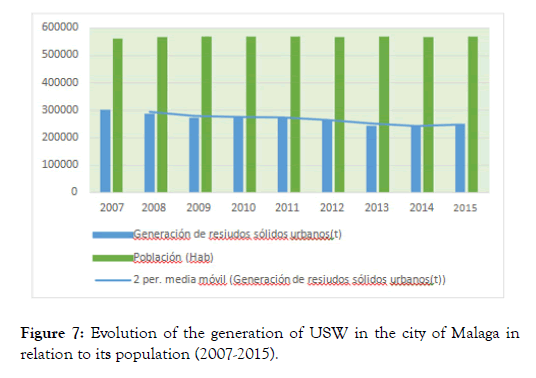
Figure 7: Evolution of the generation of USW in the city of Malaga in relation to its population (2007-2015).
We can see how, in spite of the fact that the average population of 560,000 inhabitants per year does not change, the amount of generated urban waste fluctuates through the time. During the period 2007-2013, it can be observed how the amount of waste generation considerably decreases, these figures coincide with the economic crisis in 2008 from which Malaga as a Spanish city has not escaped. Linked with this fact, we can also mention the achieved improvement regarding local waste facilities and collection accomplished by the company LIMASA [8]. However, the mentioned above improvement was not conclusive because since 2013 it can be observed a gradual increase in waste generation, linked again with the economic recovery of the country.
Recently, urban waste production has considerably increased. This increase has been especially motivated by the substantial changes in a society with a higher capacity to consume products that become waste when people finish using them. Food waste is the one that generates a higher environmental impact if we evaluate the production cost since it involves the use and deterioration of natural resources that are eventually discarded.
In this regard, in 2011, despite the years of crisis, almost 22 million tons of USW were still generated in Spain. This massive waste production is linked with a parallel non- renewable resources’ depletion. This fact will have an effect in a close future, especially in countries such as Spain with a high level of consumption and a high degree of dependence on the external supply of energetic and mineral raw materials [9].
Regarding the amount of annually generated waste registers, LIMASA has its own information system but does not take into account food waste that is separately collected and the exact information of food waste production is unknown. The company LIMASA III has a recovery and composting plant (Environmental Centre Los Ruices) where generated USW is managed with the goal of getting recycling and valorisation of some of the components contained in the USW (Figure 8).
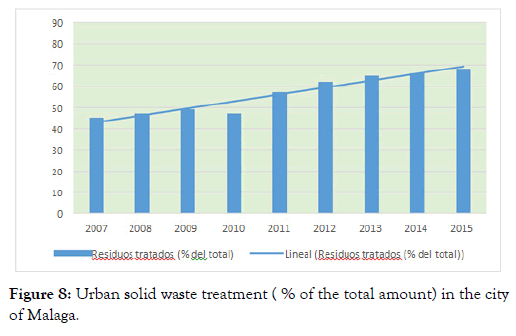
Figure 8: Urban solid waste treatment ( % of the total amount) in the city of Malaga.
Taking into account that 60% is the optimal value of the treated waste and 80% the goal that is intended to be reached, we can assume that between 2007-2011 there is a presence of more than 40% of dumping and only since 2012 this percentage is reduced, but it is still very far from the established goal in the Agenda 21, not regarding in any case incineration as an option of energetic valorisation. Since 2012, it is observed, in an encouraging way, a gradual increase that reaches 68% of the treated waste and reducing to 22% the percentage of dumped waste.
Within these percentages, we find food waste. This waste produced in the houses should have the same special collection service that is applied to waste coming from markets since it causes unpleasant odours, attracts insects, rodents and homeless people. Its accumulation gives rise to an unhealthy outbreak and the humidity percentage that these wastes have is very high, so the bins tend to be overloaded [10].
Recent evidence [11] shows that there are numerous positive consequences regarding the reduction of food waste. Considering the magnitude of waste, any food and drink waste reduction in terms of household-level can have a substantial positive environmental effect (Figure 9).
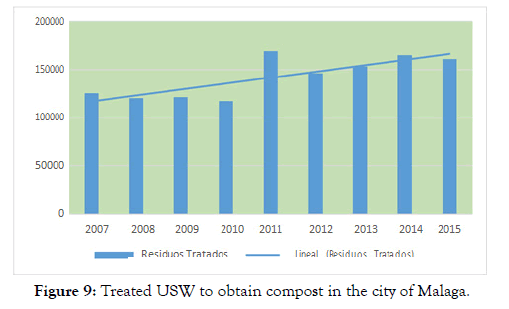
Figure 9: Treated USW to obtain compost in the city of Malaga.
As can be observed in the bar chart, urban waste treatment to elaborate compost has increased, which shows a better destiny for this waste. In 2015, 160,654 tons were treated to obtain compost in the city of Malaga, while these numbers do not show the reduction of food waste, they present us how this waste is reused eager to benefit from its energetic value.
Still, we have to keep in mind that the removal of food waste causes a huge environmental problem. The disposal produces a huge quantity of greenhouse gas emissions. Incineration and compost also cause greenhouse gas emissions, and residual waters of anaerobic digestion cause eutrophication and acidification of the local ecosystems [12].
It is demonstrated that the volume of meat waste in the world is relatively low, still the meat industry causes a considerable impact on the environment in terms of land use and carbon footprint, especially in countries with high income and Latin America, that as a whole, they cover 80% of the total meat waste.
Excluding Latin America, areas with high income are responsible of about 67% of all meat waste. Fruit waste significatively contributes to water waste in Asia, Europe and Latin America, especially because of their extremely high levels. Similarly, huge volumes of vegetable waste in industrialised countries of Asia, Europe and south and southeast of Asia mean a huge carbon footprint for this sector [13].
Food waste reduction is the most promising via to lower food waste and there is a growing body of literature that explore consumers behaviours regarding food waste and its determinants. In comparison with the investigation about the amount of food waste and the global impact of the food system, researches about waste behaviour are less frequent. It should be argued that there is work to be done to better understand the determinants in food waste behaviour [11,14-17].
Conclusions
In recent years, urban waste production has increased in the city of Malaga. This increase has been especially motivated by the substantial changes in a society with a higher capacity to consume products that become waste when people finish using them. Of these, food waste cause more environmental impact if we value production costs since it involves the use and deterioration of natural resources that are finally discarded.
Within the main socioeconomic impacts, we can find the negative impact that it implies in Malaga’s economy, as in Spain in general since 22.9 million euros are destined to the collection of urban waste, where food that used natural resources in vain, is found. Moreover, this waste causes unpleasant odour, attracts insects, rodents and homeless people and its accumulation gives rise to an unhealthy outbreak.
Food waste reduction is the most promising via to lower ozone footprint caused by food waste if we take into account that the disposal produces a huge quantity of greenhouse gasses. Incineration and compost also produce greenhouse gasses and residual water of anaerobic digestion cause eutrophication and acidification of the local ecosystem.
REFERENCES
- LG COWBOY. French and Italian Legislation on Food Waste: An Example for Other EU Member States to Follow ?. Aranzadi Magazine of the European Union. 2017; 4: 31-49.
- Food and Agriculture Organization (FAO). Food Waste Harms Climate, Water, Land, and Biodiversity.
- http://www.eu-fusions.org/index.php/about-food-waste/280-food-waste-definition.
- Ribić B, Kostić R, Holding Z, Petrushevski K, Garcia A, Charcon L, et al. Feasibility study for food waste management in target cities. 2018.
- http://www.bin2grid.eu/documents/73603/137695/Spain_MSW.pdf/356a578b-8b59-4456-a6c1-447bf734eb03.
- Vaqué LG. El desperdicio de alimentos en la UE:¿ un problema sin solución?. Revista CESCO de Derecho de Consumo. 2017; 31:132-146.
- Hall KD, Guo J, Dore M, Chow CC. The progressive increase of food waste in America and its environmental impact. PloS one. 2009;4:e7940.
- http://www.limasa3.es/.
- Garcia-Garcia G, Woolley E, Rahimifard S. Optimising industrial food waste management. Procedia Manufacturing. 2017;8:432-439.
- http://www.limasa3.es/recogida/recogida-de-mercados.
- Russell SV, Young CW, Unsworth KL, Robinson C. Bringing habits and emotions into food waste behaviour. Resour Conserv Recycl. 2017;125:107-114.
- Salemdeeb R, Zu Ermgassen EK, Kim MH, Balmford A, Al-Tabbaa A. Environmental and health impacts of using food waste as animal feed: a comparative analysis of food waste management options. J Clean Prod. 2017;140:871-880.
- http://www.fao.org/3/a-ar428s.pdf.
- http://www J cleaner production.gestion-calidad.com/gestion-residuos.html
- Guerrero E Jhoniers, Ramirez F Ignacio. Manejo ambiental de residuos en mataderos de pequeños municipios. Scientia Et Technica. 2004;3:32.
- http://www.omau-malaga.com/agenda21/subidas/archivos/arc_104.pdf.
- http://www.ine.es/jaxiT3/Datos.htm?t=2882.
Citation: Alanbari MH, Laiseca SR (2020) Food Waste and its Impact on the City of Malaga. Int J Waste Resour 10: 387. doi: 10.35248/2252- 5211.20.10.387
Copyright: © 2020 Alanbari MH, et al. This is an open access article distributed under the terms of the Creative Commons Attribution License, which permits unrestricted use, distribution, and reproduction in any medium, provided the original work is properly cited


